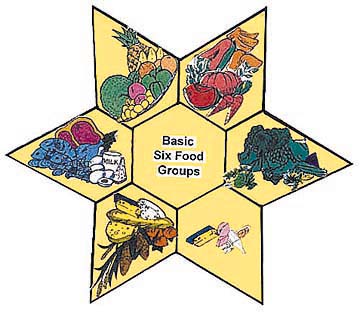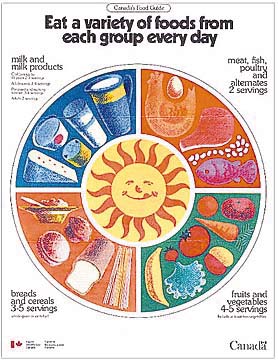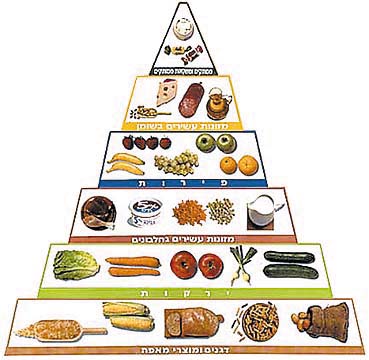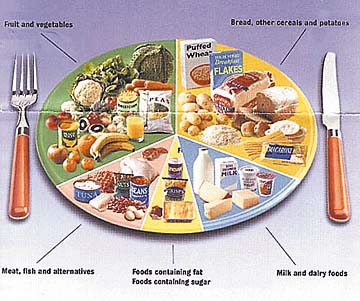


Star-BulletinWE are not the center of the universe. In the United States, we tend to lean toward that opinion. All it takes is an examination of something we consider universal to learn that it's a big world out there.
Take the food pyramid. It's ubiquitous. You can barely turn around without finding it somewhere: In schools, doctor's offices, cafeterias, cereal boxes.
Other nations, though, have other ways to illustrate their nutritional recommendations. A collection of international versions has been assembled by nutritionists and graduate students at the University of Georgia in Athens, Ga., and is available on the Internet at http://www.fcs.uga.edu/~selbon/apple/guides.
The International Food Information Council also examined the subject in a recent edition of its publication, Food Insight.
In developed countries, food guides promote eating that wards off chronic disease, Food Insight says. In poorer nations, they encourage diets that guard against malnutrition.
Their common message: Less fat; more grain, fruits and vegetables -- "balance, variety and moderation in food choices."
Summarized here are excerpts from information collected by both organizations.
(At top) The numeral 6 encourages balanced eating in six categories. Eat 30 "foodstuffs" a day, taking staple, main and side dishes together, Japanese nutritionists urge. "Happy eating makes for happy family life; sit down and eat together and talk; treasure family taste and home cooking." JAPAN

The star shape encourages balanced eating. Other recommendations: Eat a variety of "clean and safe" foods, maintain a desirable body weight, "practice a healthy lifestyle." PHILIPPINES

An oval, divided into four unequal parts stresses the importance of grains and fresh produce over fats, sugars and meats. "Realize that current alcohol consumption is far too high in many cases," the Netherlands Dietetic Association also warns. NETHERLANDS

Multicolored backgrounds separate the four food groups (there's no fat category). Canadian nutritionists also advise a caffeine limit of four cups of coffee per day and encourage fluoridation in water supplies. CANADA

A pyramid like ours, but this one shows fruits and vegetables in separate layers in unequal amounts. Cheese is grouped with fats. ISRAEL

The circular theme is popular internationally. Great Britain converts it into a dinner plate. GREAT BRITAIN
The changing food groups,
Star-Bulletin
through historyU.S. nutritionists first issued a food guide in 1916, when the Department of Agriculture recognized five food groups: milk and meat, cereals, vegetables and fruits, fat foods and sugar foods. By the 1940s, that list had expanded to 10 food groups, according to the publication Food Insight. Vegetables and fruits were broken down into individual categories such as leafy greens or citrus. This proved difficult for consumers to remember, so the Basic Four food groups -- milk; fruit and vegetable, grain, meat -- were born in the late '50s.
The aim in those days was to be sure Americans got enough basic vitamins and minerals for a so-called "foundation diet." Today's aim -- expressed in the food pyramid of 1980 -- is to assure they don't eat too much of the bad things at the expense of the good ones.
Thus, the base of the pyramid is the largest section and represents foods we should eat most: breads, cereals, rice and pasta. The comparatively tiny tip is for fats, oils and sweets.
The pyramid has since been modified to provide for the eating customs of the various ethic groups that make up the nation. Adaptations have been made for Asian, Mexican, Mediterranean, vegetarian, Russian and native American diets.
Teaching kids about good nutrition is a challenge in these times of Happy Meals and Big Grab potato chips. Bingo puts fun in the food pyramid
Make it a game, though, and miracles can happen.
Food Pyramid Bingo teaches the food groups and goes beyond to explain about serving sizes, a challenging concept even for adults.
The game, developed by dietitian and nutritionist Kathleen Stefancin, is recommended for ages 8 and above.
Cost is $9.95 plus $4.50 shipping. A classroom version is $19.95 plus $4.50 shipping.
To order, call SmartPicks, (888) 712-3144, or visit the company's Web site, http://www.smartpicks.com.
Click for online
calendars and events.